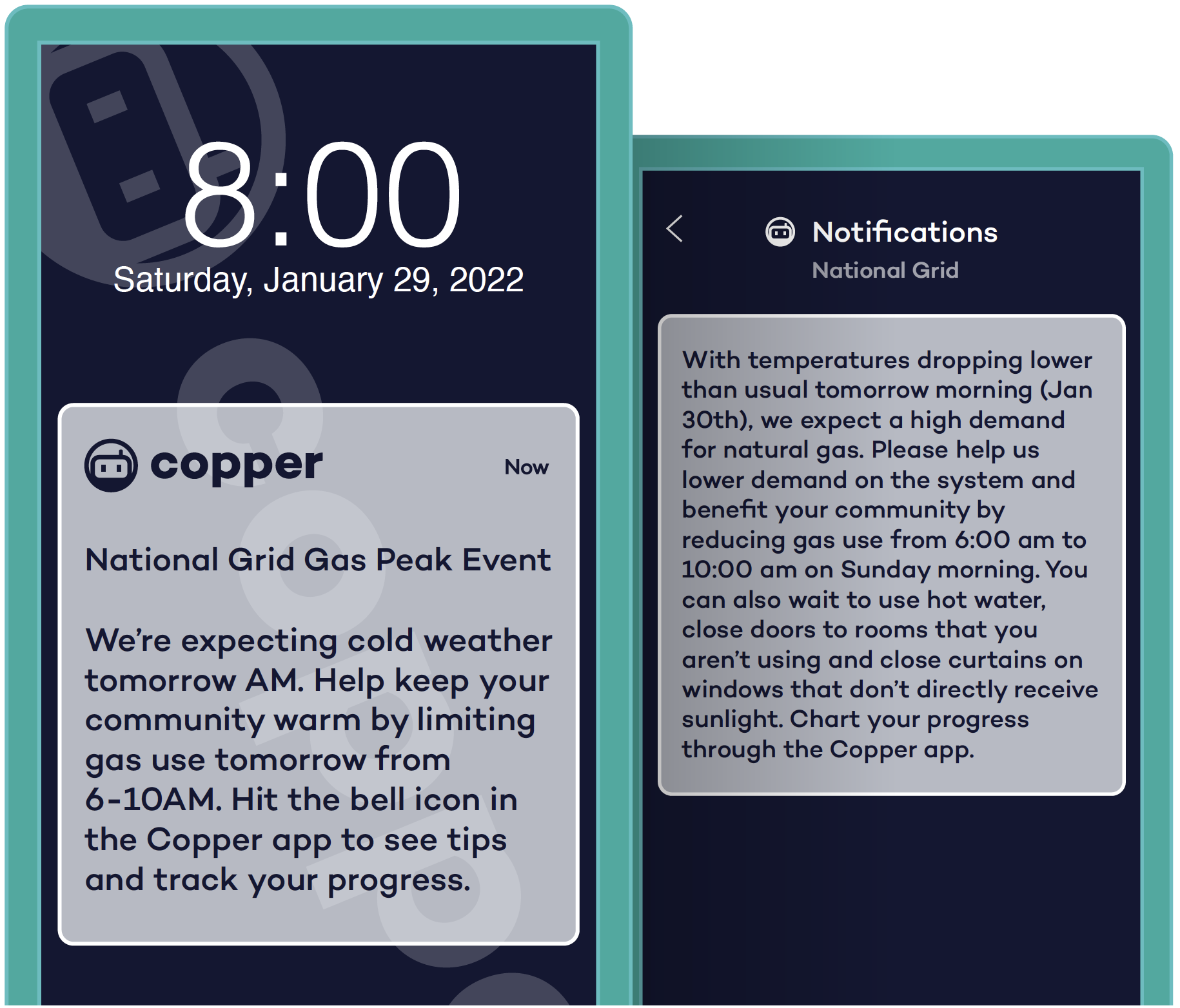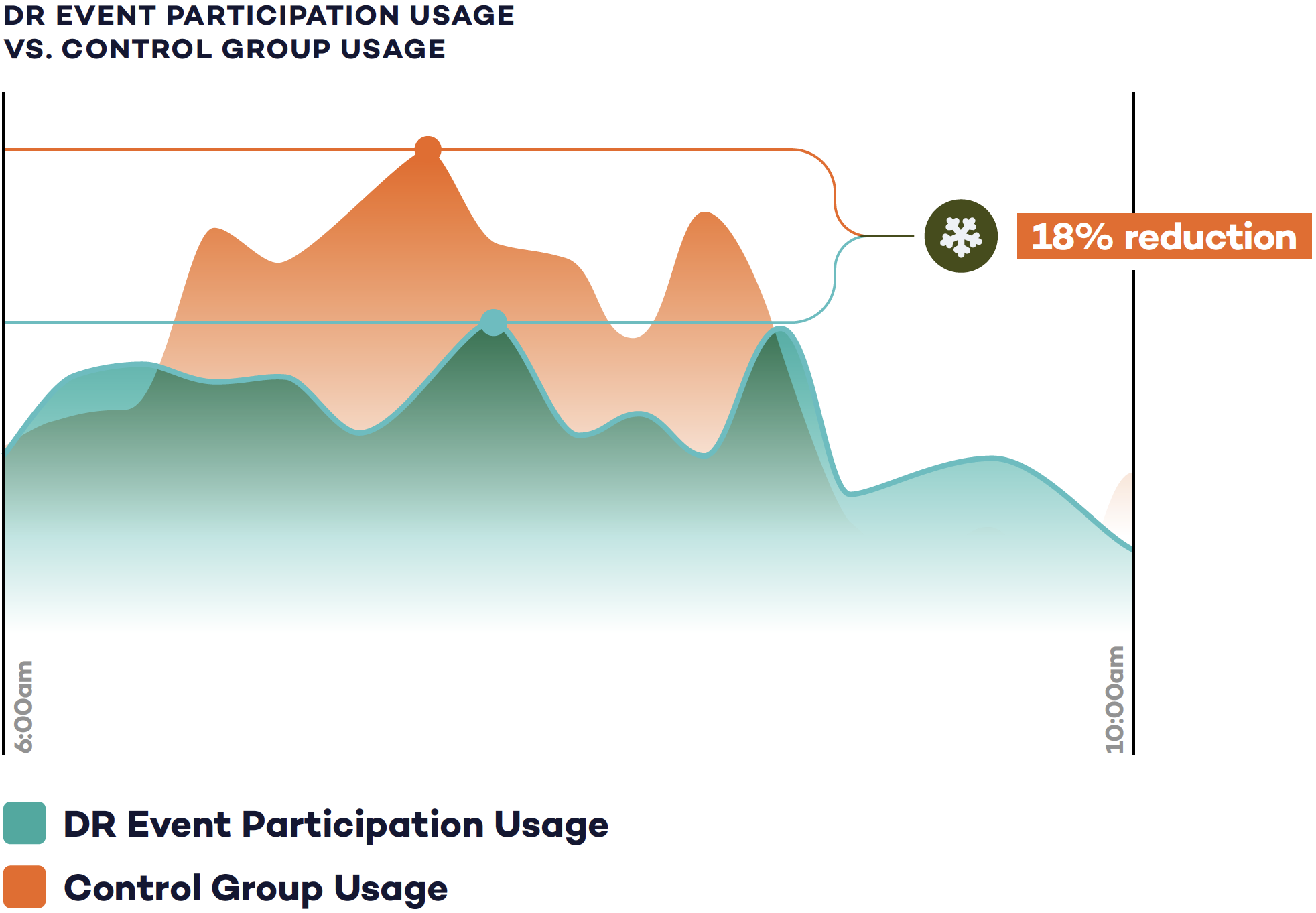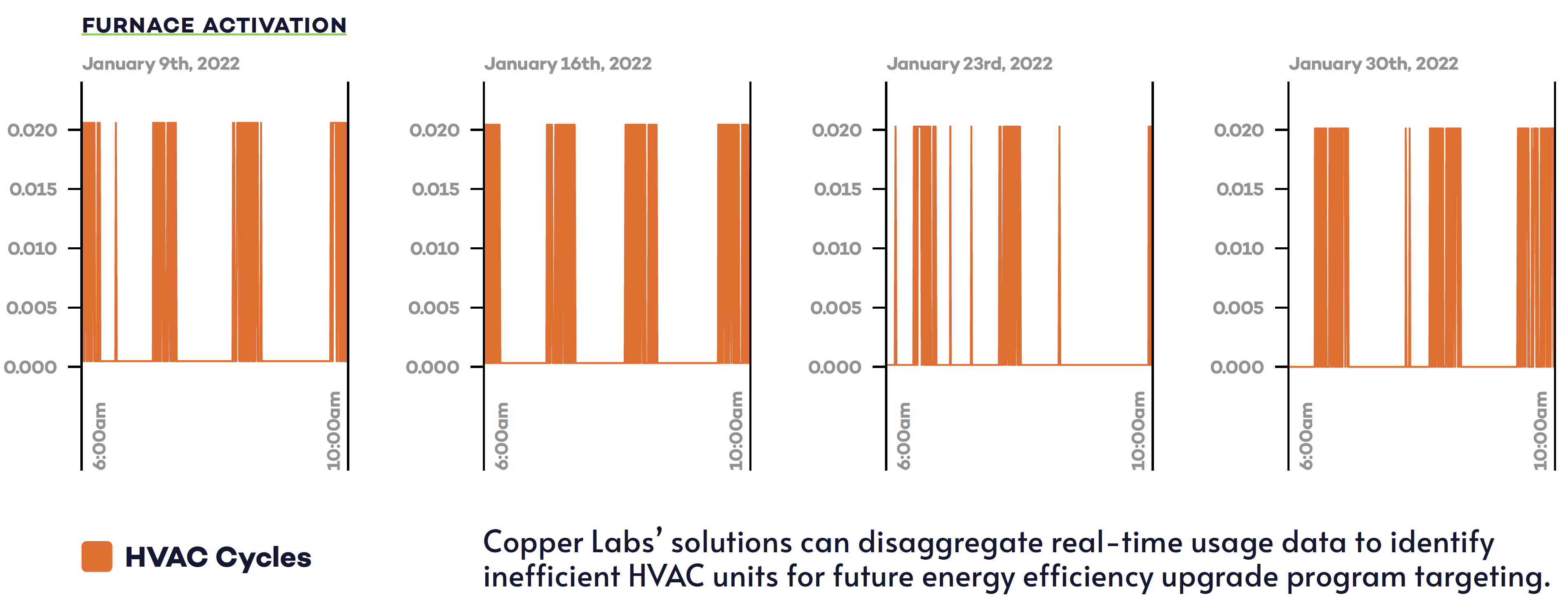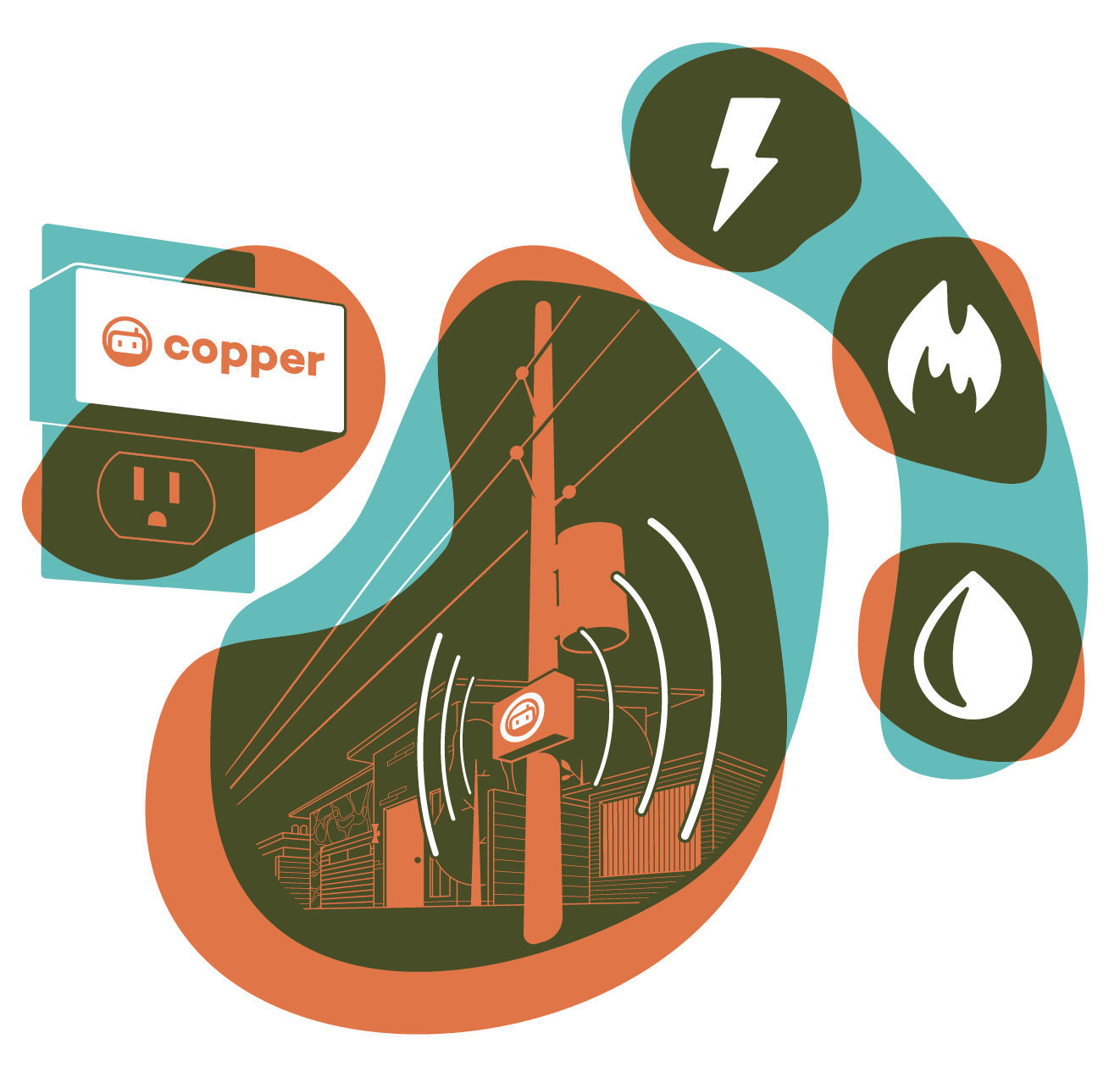EXECUTIVE SUMMARY
In late January 2022, the East Coast battened down the hatches to weather one of the worst blizzards to hit the region in years. Called a bomb cyclone, the storm brought piles of snow, roaring winds and plummeting temperatures.
Expecting an unusual surge in demand from residents trying to stay warm and with capacity stretched thin, natural gas and electric utility National Grid tapped into Copper Labs’ real-time insights to manage energy use – and keep the heat on during the peak of the storm. When the snow finally settled, customers enrolled in the utility’s natural gas demand response program had cut consumption 18% and Copper Labs had demonstrated how real-time usage data could make a significant difference for utilities when it matters most to the grid.
Challenge
Because of regional constraints and high costs, natural gas utilities like National Grid have been unable to expand delivery infrastructure in recent years.
At the same time, significant weather events, like the 2022 bomb cyclone, are on the rise, exposing the need for better methods of demand management for utilities of all types. Tasked with creating programs designed to limit outages while increasing resource availability to consumers, natural gas utilities rely on traditional methodologies that use historic data from drive-by meters to inform their program design.
Faced with some of the harshest weather conditions, increasing demand and an inability to quickly build out infrastructure in New York State, National Grid was looking for ‘non-pipes alternatives’ that would allow the utility to continue to serve its customers and avoid system disruptions.
While traditional natural gas load management initiatives, such as weatherization, high-efficiency equipment, home energy reports and smart thermostats continue to deliver value for customers, these measures are one-time actions. Copper Labs provides the ability to target, engage, and nudge consumers in real-time to shift demand when it matters most to the grid.
National Grid needed to take its demand response efforts and future system planning to the next level. Yet, like most of its peers, the utility could only access gas usage data from drive-by meters every 30 days, missing the critical real-time insights required to understand customer behavior and gas consumption patterns.
Solution
National Grid partnered with Copper Labs to roll out a residential natural gas demand response program for Downstate New York, the first of its kind.
The utility chose Copper Labs’ patented technology thanks to its unique, first-in-the- market ability to unlock near real-time usage data directly from existing AMR gas meters without requiring extensive infrastructure upgrades.
An in-home device allows National Grid to observe customer loads and send targeted messages to enrolled customers on their smartphones. These notifications encourage customers to modify their behavior, e.g., turning their heat down a few degrees or postponing a hot shower to conserve natural gas during peak demand or significant weather events.
In the lead-up to the bomb cyclone of January 30, 2022, National Grid was expecting an increase in natural gas consumption – and decided to put Copper Labs’ solution to the test.
Together, National Grid and Copper Labs created a demand response event that would cover a four-hour peak demand time from 6 to 10 a.m. during the height of the blizzard, monitor usage and send targeted messages to customers.
In addition to advising National Grid on how to craft impactful messages to encourage behavior change, Copper designed the program as a statistically randomized control trial, with a treatment group that received the targeted messages and a control group that did not.
RESULTS
As predicted, the bomb cyclone peaked in New York on the morning of January 30, 2022.
Copper Labs and National Grid executed the demand response event, observing and tracking real-time usage data and sending targeted alerts. The result was an 18% reduction in natural gas usage during the peak demand window from the customers who received the messages compared to those in the control group who did not.


The demand response event resulted in an 18% reduction in natural gas usage during the peak demand window from the customers who received the messages compared to those in the control group who did not.
The gas savings allowed National Grid to manage demand during the bomb cyclone while effectively and efficiently serving its customers and contributing to avoid service disruptions.
The utility can also use the program and continued observation of real-time usage data to predict usage patterns and engage consumers during future significant weather events.
Additionally, Copper Labs showed that its high-interval data could identify inefficient HVAC units when comparing homes in similar weather conditions based on gas consumption. These valuable insights are critical for utilities planning future energy efficiency upgrade programs.

*This experiment was performed with a small sample size.
Statistical significance was established using randomized control trials.
“Unlocking near real-time usage data for our gas consumers has created new opportunities to reduce peak demand when it matters most to our gas distribution system. With Copper Labs’ innovative technology, we have a new channel to engage targeted consumers with actionable insights that help them reduce energy costs.”
JOHN REI
DIRECTOR, DISTRIBUTED ENERGY RESOURCES
NATIONAL GRID

On the Horizon
To date, Copper Labs has done this at the household level, where consumers connect an inhome device via Wi-Fi and receive personalized insights via the Copper smartphone app.
Copper Labs’ next innovation is partnering with utilities and network operators, both wireline and wireless, to scale its technology to the neighborhood level.
Leveraging existing broadband networks and meters, Copper deploys outdoor devices that unlock near real-time data from hundreds of meters so utilities can optimize load management and more efficiently modernize legacy grids.
Download a pdf version of this case study here:
Copper National Grid Gas Case Study
